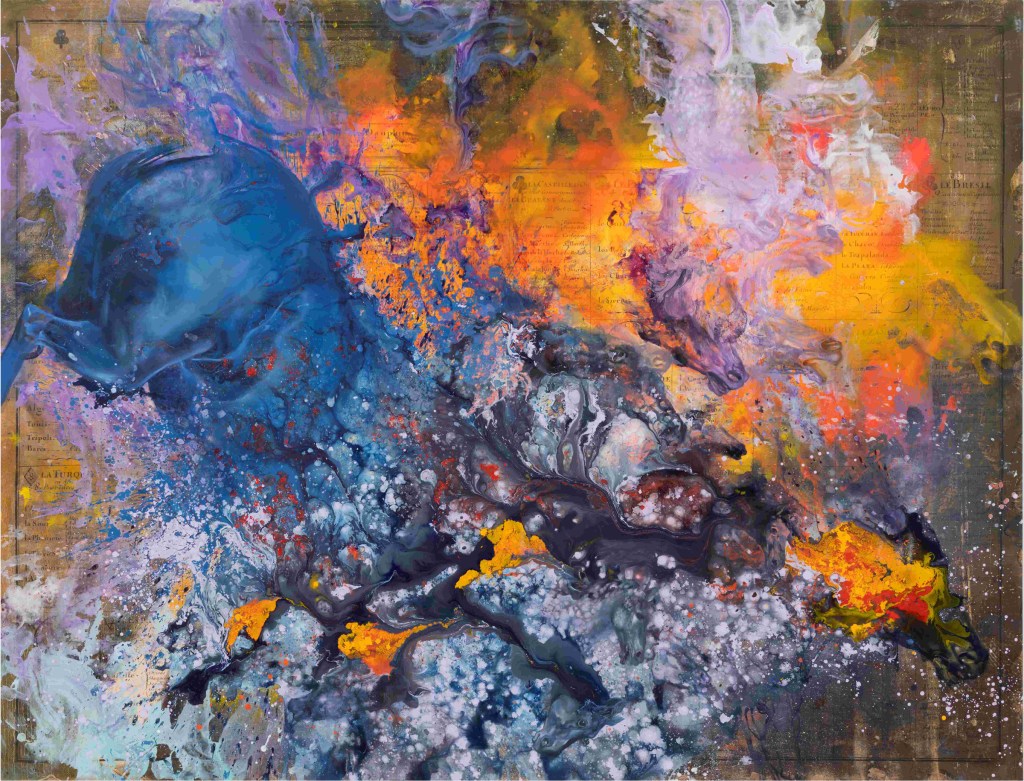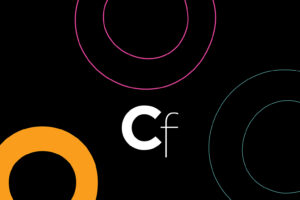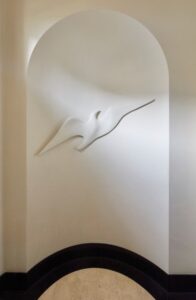The Des Moines Art Center Presents Firelei Báez


Firelei Báez at the Des Moines Art Center in Iowa features more than 30 works showcasing nearly two decades of the artist’s paintings, drawings, and multimedia installations that transport viewers through time and space, creating opportunities for wonder, reflection, and enlightenment. On view through September 21, Firelei Báez explores the multilayered legacy of colonial histories and the African diaspora in the Caribbean and beyond.
In her work, the artist draws on the disciplines of anthropology, geography, folklore, fantasy, science fiction, and social history to unsettle categories of race, gender, and nationality. Her paintings feature complex and layered uses of pattern, decoration, and saturated color, often overlaid on reproductions of archival imagery such as colonial maps or construction plans for colonial architecture.
“Báez’s practice entices the eye and engages the senses at the same time that it challenges the mind and provokes daunting questions around agency and freedom, prejudice and state-sponsored violence,” said Kelly Baum, the Art Center’s John and Mary Pappajohn Director and CEO. “Such an exhibition reflects our intention to serve as a public forum for discussion and our strategic ambition of ‘bringing the world to Iowa, and Iowa to the world.’”
The exhibition is installed in 2,000 square feet of the Des Moines Art Center, occupying galleries in three distinctive buildings by Eliel Saarinen, I. M. Pei, and Richard Meier. It opens with one of Báez’s formative early series, Can I Pass? Introducing the Paper Bag to the Fan Test for the Month of July (2011), 31 self-portraits that are displayed like a calendar. The title references the widespread 20th-century practice of using a brown paper bag as a color test to admit or deny people entry into social functions based on the tone of one’s skin.
Next, viewers will find themselves immersed in “A Drexcyen chronocommons (To win the war you fought it sideways)” (2019). This room-sized work creates a grotto-like space using perforated fabric reminiscent of blue tarp, a material often used as shelter and refuge following natural disasters. Báez employs the tarps to cast spots of light on surfaces painted with symbols of the Black diaspora.
In the following gallery, viewers will discover a series of portraits that explore femme identity. These works depict figures with intricate patterning based on tattoos, Persian miniature painting, and exuberantly coiled hair.
The exhibition concludes with “(once we have torn shit down, we will inevitably see more and see differently and feel a new sense of wanting and being and becoming)” (2014), a massive archway that celebrates the Sans-Souci palace in Haiti, and “A most curious manifestation (or a boat sailing the great rapids of time)” (2024), a recent addition to the Des Moines Art Center’s collections.
From beginning to end, viewers will follow an artistic and historical journey spanning decades and geographies, mirroring the arc of Baez’s own career.
To learn more, visit desmoinesartcenter.org.







